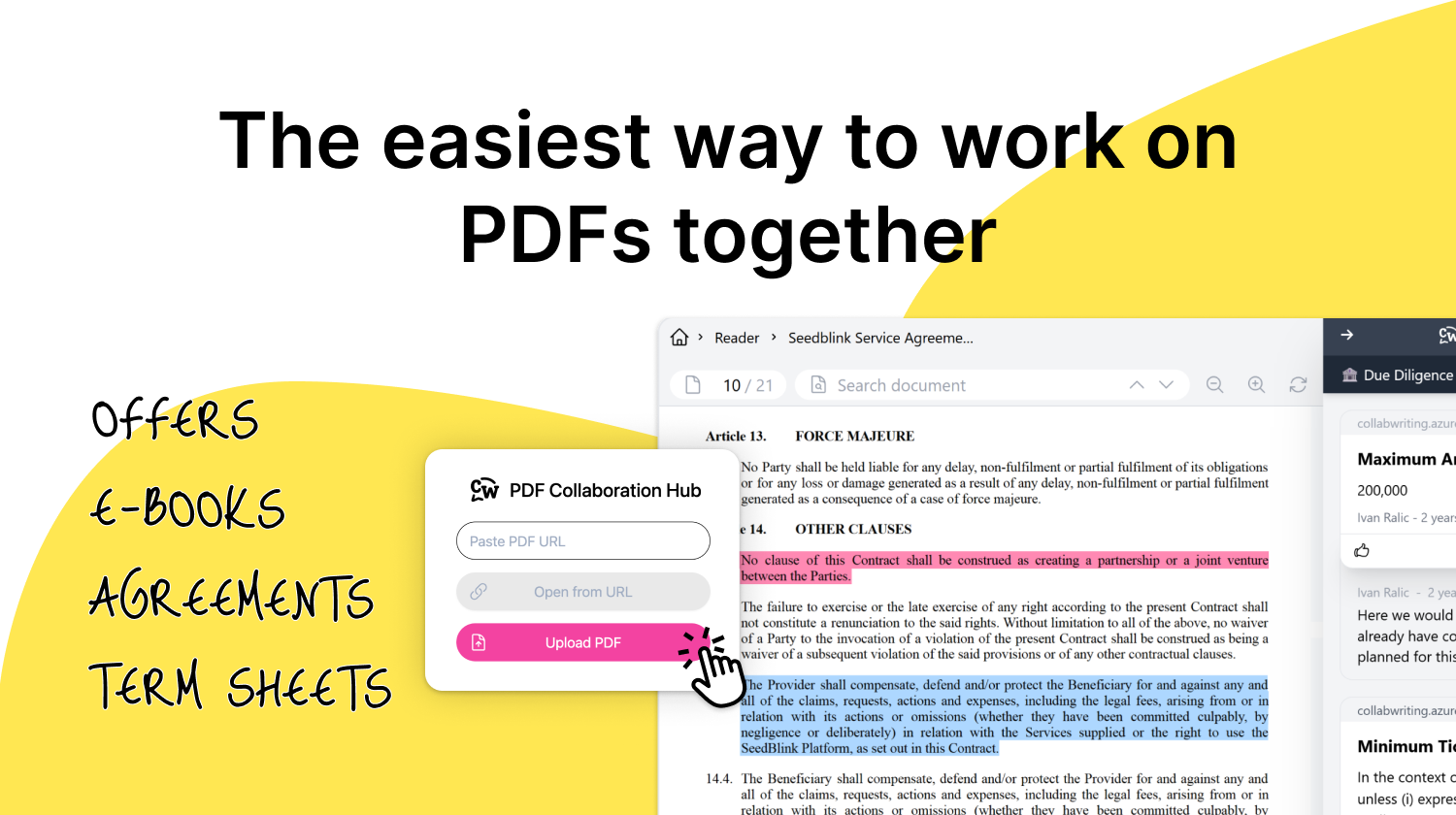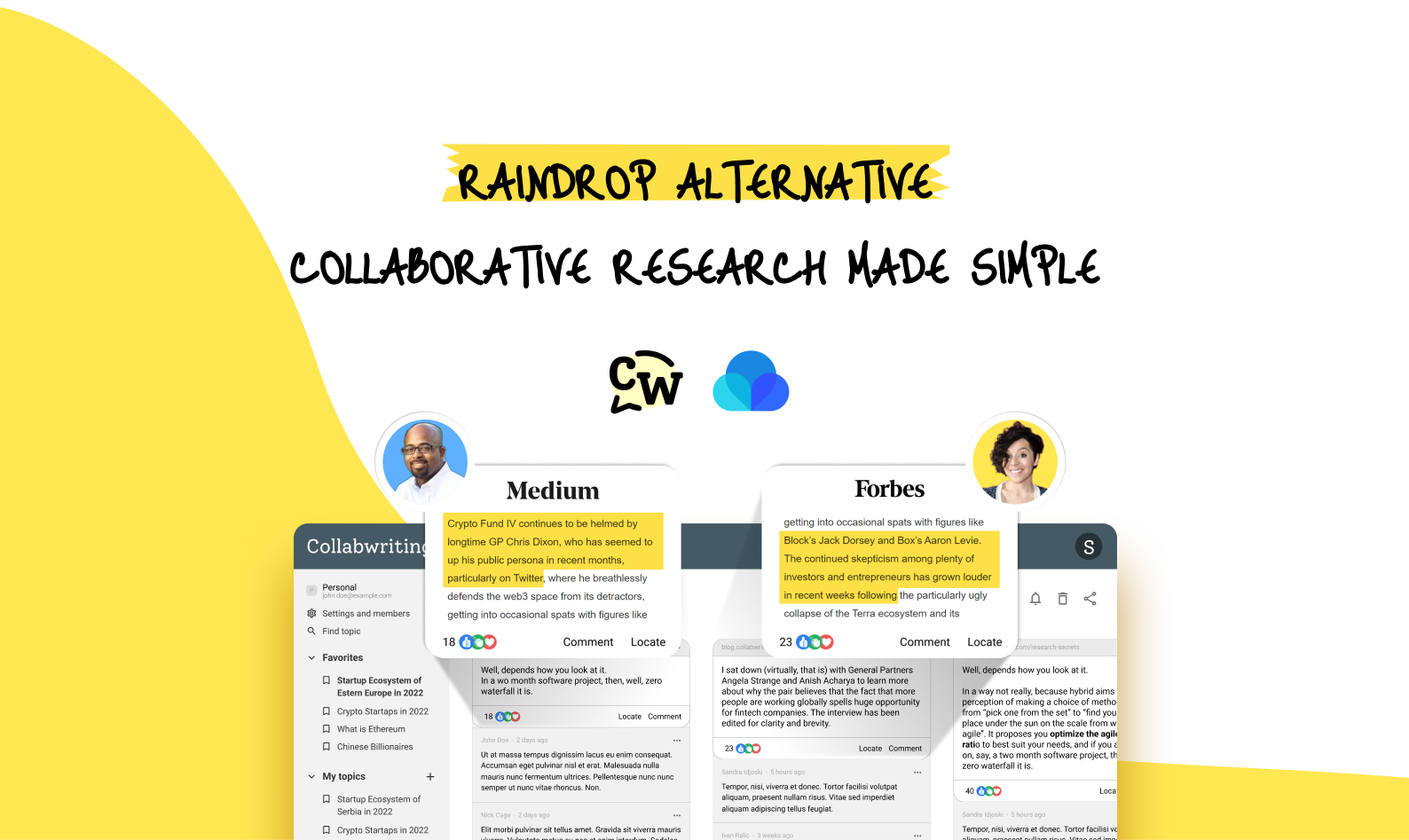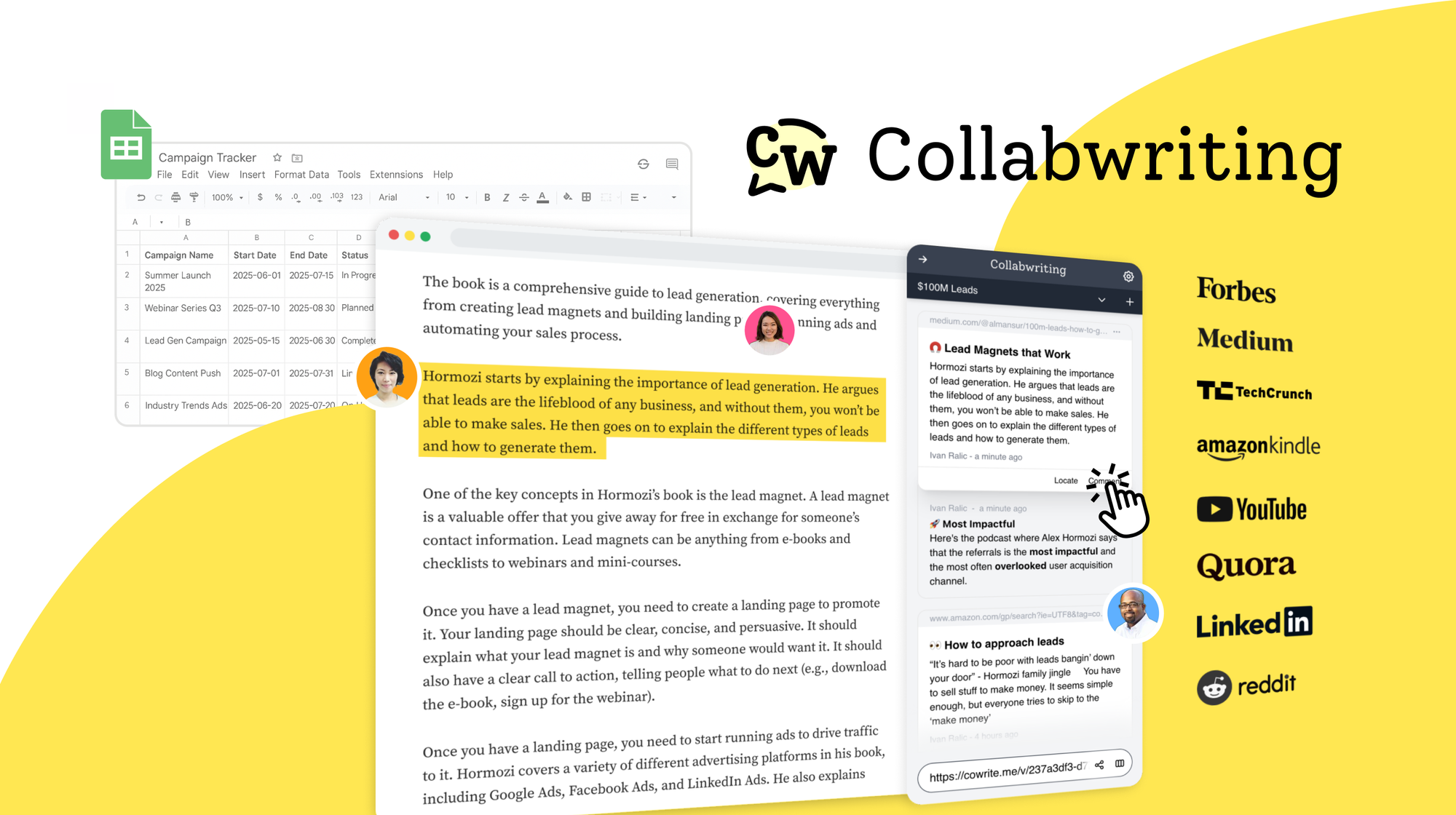When it comes to research, many people think the more you save, the better. The bigger your library, the smarter you must be, right?
Not exactly.
Collecting hundreds of articles, PDFs, and notes without context doesn’t make your research stronger; it makes it chaotic.
You end up with a cluttered library, open tabs you forget about, and insights that never actually get used.
Here’s why context matters more than quantity, why research itself is only as good as the insights it generates, and how Collabwriting helps teams turn saved content into meaningful, actionable knowledge.
The Trap of Quantity in Research
Saving everything in the hope it might be useful later creates significant challenges for individuals and teams alike.
- Information overload: Hundreds of links with no clear path to relevance can feel overwhelming. You might spend hours scrolling through a library trying to find a single useful piece of content, only to end up frustrated and stuck.
- Wasted time: Collecting without context means constantly retracing steps. You might have saved the perfect article yesterday but forget why it mattered or how it applies to your current project.
- Shallow understanding: Without context, research becomes a list of disconnected facts. You may have all the pieces of a puzzle, but no way to see the full picture. Insights are lost, patterns are missed, and decisions are delayed.
In essence, more is not better. Collecting content without thinking about its use or relevance leads to clutter, not clarity. Plus, it’s pointless.
According to findings from the University of California, Irvine, the average person today can focus on a single screen for just 47 seconds, a dramatic drop from 2.5 minutes two decades ago. Even more striking, recovering from a distraction can take nearly 30 minutes, highlighting the real cost of context switching.
The Power of Context in Research
Context transforms research from a pile of links into a structured source of insight.
It means understanding why and how each piece of information matters, so it can actually guide decisions.
Practical ways to add context include:
- Tag and categorize by topic or project: Don’t just save links; organize them around the problems you’re solving. For example, instead of “Marketing Links,” have clusters like “Content Marketing Strategy Q4 2025” or “Competitor Research for Product Launch.”
- Add notes and highlights: Highlight the key takeaway and explain why it’s important. A saved article becomes more than a reference; it becomes a thought or insight that can guide your work.
- Group information around use cases: Instead of organizing by source, organize by purpose. What problem does this insight solve? How does it connect to other research?

By prioritizing context, research stops being a passive collection of articles and starts being a live resource that informs decisions, sparks ideas, and improves collaboration.
How Collabwriting Helps Teams Add Context to Every Insight
Collabwriting is designed specifically for teams that want to turn research into actionable knowledge.
Unlike simple bookmarking tools, Collabwriting lets you add context at every step:
- Highlight and annotate content: Capture your thoughts, observations, or questions directly alongside the content. This ensures no insight is lost, and your reasoning is preserved.
- Organize research with clusters and topics: Every saved insight has a clear place. This makes it easy for anyone on the team to see what belongs where and why it matters.
- Collaborate with anyone: Teams can discuss insights, tag content for projects or problems, and ensure everyone understands why a particular insight is relevant.
With Collabwriting, research becomes structured, collaborative, and actionable. Instead of a chaotic library, your team has a knowledge hub where every saved item contributes to decisions, projects, or strategy.

Collabwriting - Make Every Save Actionable
Collabwriting allows you to gather all your online sources in one place. Just highlight, save, and collaborate with anyone on any content you find online, including PDFs.
No more endless scrolling, no more lost insights, just simple, structured knowledge at your fingertips.
The Benefits for Teams
When research is context-rich and collaborative, the impact on a team is significant:
- Faster, better-informed decisions: Team members spend less time searching and more time acting on insights that are already connected to relevant projects.
- Shared understanding: Everyone knows why an insight matters, reducing miscommunication and duplicated work.
- Easier trend tracking: When information is organized around context instead of quantity, patterns, gaps, and opportunities become clear.
💡 In short, context turns research into actionable intelligence, and Collabwriting makes it possible for teams to consistently capture, share, and use insights effectively.
Takeaways
- 👉🏼 More saved articles don’t make research better. Context is what turns information into meaningful insights.
- 👉🏼 Organize research around problems, projects, and use cases, not just by source.
- 👉🏼 Use tools like Collabwriting to make collaboration effortless and ensure every insight can be acted on.
FAQ
Does saving more articles automatically make my research better?
No. Collecting hundreds of articles, PDFs, or notes without context creates clutter and makes it harder to use your insights. Quantity alone doesn’t improve research. It can actually slow you down.
Why is context more important than quantity in research?
Context helps you understand why a piece of information matters and how it can be applied. Without context, insights are disconnected, patterns are missed, and decision-making is slowed.
What are the risks of saving content without context?
- Information overload: Too many unorganized links make it hard to find what you need.
- Wasted time: You may spend hours retracing your steps to understand why an article mattered.
- Shallow understanding: Insights remain isolated, making it difficult to see the bigger picture or act on research.
How can I add context to my research?
Practical ways include:
- Tagging and categorizing by topic, project, or problem.
- Adding notes and highlights explaining the key takeaways.
- Organizing information around use cases, not just sources.
How does Collabwriting help add context to research?
Collabwriting lets you:
- Highlight and annotate content to preserve insights and reasoning.
- Organize research into clusters and topics so every saved item has a clear purpose.
- Collaborate with your team by tagging, commenting, and sharing insights easily.
What benefits do teams get from context-rich research?
- Faster, better-informed decisions.
- Shared understanding and reduced miscommunication.
- Clear identification of trends, gaps, and opportunities.
Can Collabwriting handle different types of content?
Yes. You can save and collaborate on articles, PDFs, and any online content, keeping all insights organized and traceable.
How do I start making my research actionable?
Focus on context over quantity. Organize around problems or projects, annotate key takeaways, and use tools like Collabwriting to capture, structure, and share insights efficiently.





![5 Tools Marketers Use to Organize Research - Compared [2025]](/content/images/2025/11/cover-4-1.png)
![Build Credibility in Research: Smart Way to Verify Information and Track Sources Easily [2025]](/content/images/2025/10/covers-for-blog--7--1.png)

![How Marketers Can Turn LinkedIn Content into Collaborative Research [2025]](/content/images/2025/10/covers-for-blog--8-.png)
![Best Readwise Alternative for Personal & Team Research [2025]](/content/images/2025/09/Frame-814--3-.png)



